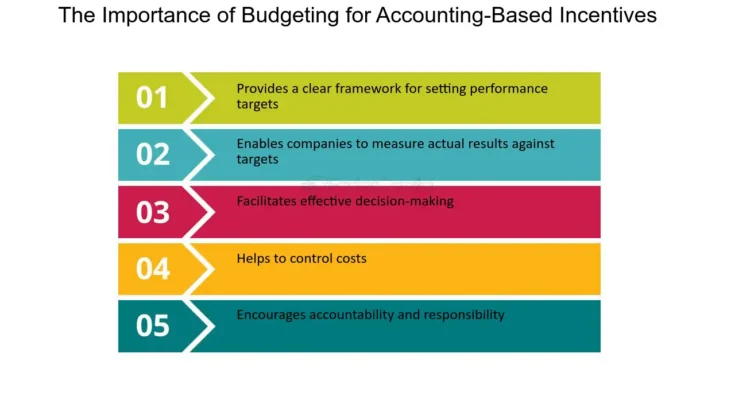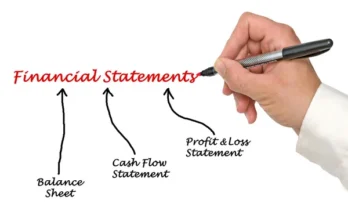Budgeting is one of the most powerful tools for managing finances, whether for personal use or within a business. A well-crafted budget not only helps you control spending and save money but also ensures you’re prepared for unexpected expenses and future financial goals. In 2024, with inflationary pressures, economic shifts, and evolving financial products, using effective budgeting techniques is more critical than ever. This guide explores key budgeting strategies for both individuals and businesses to help you stay financially healthy and achieve long-term success.
1. Start with Clear Financial Goals
The first step in creating an effective budget is identifying your financial goals. These goals serve as the foundation for your budgeting decisions, whether you’re saving for a major purchase, paying off debt, or growing your business. For individuals, goals might include saving for retirement, an emergency fund, or a vacation. For businesses, goals could be increasing profitability, reducing debt, or investing in new equipment.
Why financial goals matter:
- Prioritize spending: Having clear goals allows you to prioritize where your money goes. You’ll be more disciplined in avoiding unnecessary expenses if you know they’re taking away from your long-term objectives.
- Measure progress: A budget tied to goals lets you track your progress over time, giving you motivation and clarity about where adjustments may be needed.
Key tip: Write down your short-term and long-term goals and use them to guide your budgeting process. For businesses, break down broader goals into specific, measurable objectives, such as reducing overhead costs by 10% over the next quarter.
2. Track Income and Expenses
One of the most critical steps in budgeting is gaining a full understanding of your income and expenses. Without knowing where your money is coming from and where it’s going, it’s impossible to build a realistic budget.
For Individuals:
- Track all sources of income: Include your salary, side jobs, investments, and any passive income streams. If your income is irregular, estimate a monthly average based on past earnings.
- Monitor expenses: Keep a record of every dollar you spend, from fixed costs like rent or mortgage payments to variable expenses like groceries, entertainment, and dining out. Use budgeting apps like Mint, YNAB (You Need a Budget), or a simple spreadsheet to track your spending.
For Businesses:
- Track revenue streams: Include sales, service fees, royalties, and any other income your business generates. Separate predictable income (e.g., recurring contracts) from variable or seasonal income.
- Categorize expenses: Identify fixed costs like rent, utilities, and payroll, as well as variable costs like raw materials, marketing, and travel. Business accounting software such as QuickBooks or Xero can help automate this process.
Key tip: Review your income and expenses monthly to ensure your budget is on track. Adjustments should be made if spending exceeds income, or if unexpected expenses arise.
3. Choose a Budgeting Method
There are several different budgeting methods, each with its own advantages. The key is to choose one that fits your financial situation and lifestyle or business model.
For Individuals:
- 50/30/20 Rule: This simple budgeting framework allocates 50% of your income to needs (rent, utilities, groceries), 30% to wants (entertainment, dining out), and 20% to savings and debt repayment.
- Zero-Based Budgeting: In this method, you assign every dollar of income to a specific category until there’s nothing left unallocated. This ensures that all money is accounted for, whether it’s for bills, savings, or investments.
- Envelope System: If you struggle with overspending, consider the envelope system. Allocate a set amount of cash to each spending category (e.g., groceries, gas) and only spend what’s in the envelope.
For Businesses:
- Incremental Budgeting: This method builds off your previous year’s budget by adjusting each category based on projected revenue growth, inflation, or other factors. It’s a straightforward way to create a business budget, but may not account for significant changes in the business environment.
- Activity-Based Budgeting (ABB): ABB allocates funds based on specific business activities and their expected costs. This method is more flexible and helps businesses manage resources efficiently, focusing on activities that generate revenue or improve operations.
- Rolling Budget: A rolling budget is updated regularly, typically monthly or quarterly, based on current performance and financial trends. This approach allows businesses to adjust quickly to changing market conditions.
Key tip: Test different budgeting methods to see which works best for you. Individuals might prefer the simplicity of the 50/30/20 rule, while businesses may find a rolling budget more adaptable to fluctuations in revenue and expenses.
4. Plan for Irregular Expenses
One of the most common budgeting mistakes is failing to account for irregular expenses—those costs that don’t occur every month but are inevitable, such as car repairs, medical bills, or annual insurance premiums. For businesses, these can include equipment purchases, quarterly taxes, or large inventory orders.
How to manage irregular expenses:
- Create a sinking fund: Set aside a portion of your income each month for irregular expenses. For example, if you know your car insurance premium is $1,200 annually, save $100 per month toward that bill.
- Build an emergency fund: For both individuals and businesses, an emergency fund is crucial for covering unexpected expenses. Aim for three to six months of living expenses (for individuals) or operating costs (for businesses) in a liquid, easily accessible account.
Key tip: Break down irregular expenses into monthly amounts and include them in your budget, so they don’t catch you off guard when they arise.
5. Cut Unnecessary Expenses
Once you’ve tracked your spending and chosen a budgeting method, it’s time to identify areas where you can cut back. Cutting unnecessary expenses frees up more money for savings, investments, or reinvestment into your business.
For Individuals:
- Review subscriptions: Are you paying for streaming services, gym memberships, or apps you rarely use? Cancel or pause subscriptions that don’t provide value.
- Reduce discretionary spending: Limit dining out, impulse purchases, and entertainment costs. Look for cheaper alternatives, such as cooking at home or using free community resources for recreation.
- Negotiate bills: Contact your service providers (e.g., internet, phone) to negotiate lower rates or switch to more affordable plans.
For Businesses:
- Outsource non-core tasks: Instead of hiring full-time employees for tasks like marketing, accounting, or IT, consider outsourcing these functions to save on labor costs.
- Shop around for suppliers: Regularly review your supply chain and negotiate with vendors for better terms or discounts. Look for alternative suppliers offering similar quality at lower prices.
- Reduce energy and utility costs: Implement energy-saving practices such as upgrading to energy-efficient equipment, using smart thermostats, or negotiating with your utility provider for better rates.
Key tip: Cutting expenses doesn’t have to mean sacrificing quality of life or business performance. Focus on reducing non-essential costs while maintaining the essentials that support your long-term goals.
6. Increase Income or Revenue Streams
Cutting expenses alone might not be enough to meet your financial goals, especially if you’re looking to grow your savings, pay down debt faster, or expand your business. Finding ways to increase your income or business revenue is just as important.
For Individuals:
- Ask for a raise: If you’ve been in your current role for a while and your performance has been strong, consider negotiating a salary increase.
- Take on a side hustle: Explore freelance work, part-time jobs, or passive income opportunities like renting out a room or starting an online business.
- Invest for growth: Use extra funds to invest in stocks, bonds, or other assets that have the potential to grow over time and generate passive income.
For Businesses:
- Expand your product or service offerings: Explore new revenue streams by introducing complementary products or services that appeal to your existing customer base.
- Improve customer retention: Focus on keeping current customers happy through loyalty programs, personalized offers, or excellent customer service, as retaining customers is more cost-effective than acquiring new ones.
- Increase marketing efforts: Use data-driven marketing strategies to reach new customers, increase brand awareness, and boost sales. Digital marketing campaigns, social media advertising, and email marketing are cost-effective options.
Key tip: Look for ways to diversify income streams, whether through a side hustle, investments, or new business ventures, to increase financial security and grow wealth over time.
7. Regularly Review and Adjust Your Budget
A budget is not a static document; it should evolve with your financial situation. Whether you receive a raise, experience unexpected expenses, or encounter changes in the market, your budget should reflect these shifts.
For Individuals:
- Review monthly: Revisit your budget every month to track progress, identify areas where you might be overspending, and adjust for upcoming expenses.
- Adjust for life changes: Major life events such as marriage, having children, or buying a home will require you to reassess your financial goals and adjust your budget accordingly.
For Businesses:
- Quarterly reviews: Conduct a thorough budget review every quarter, analyzing financial performance against your budget projections. Identify trends and make adjustments for the next quarter.
- Adapt to market conditions: In times of economic uncertainty or market changes, you may need to tighten spending or reallocate funds to ensure business stability.
Key tip: Regular budget reviews help you stay on track and allow you to adjust to changing circumstances. Set a specific time each month or quarter for reviewing your finances and making necessary changes.



